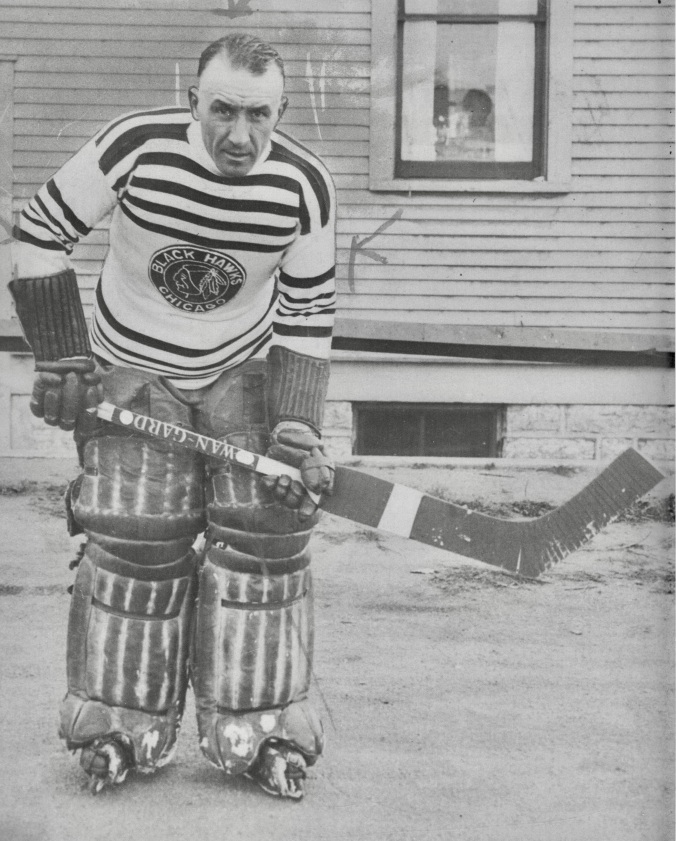
Hawkish: A cast of Black Hawks on the ice in 1934, with (from left) Leroy Goldsworthy, Duke Dukowski, goaltender Charlie Gardiner, Doc Romnes, and Taffy Abel lined up alongside Louis Trudel. (Image: SDN-076149, Chicago Sun-Times/Chicago Daily News collection, Chicago History Museum)
Ninety years ago today, on a Tuesday of this date in 1934, the Chicago Black Hawks laid claim to their very first Stanley Cup championship with a 3-1 series win over the Detroit Red Wings. With coach Tommy Gorman at the helm, Chicago became the fourth American team in seven years to seize hockey’s most coveted trophy.
The win at Chicago Stadium was hard-fought. With captain Charlie Gardiner tending Chicago’s goal and Gardiner’s childhood friend from Winnipeg, Wilf Cude, in the Detroit net, the game was goalless through four periods. In the second overtime, when Red Wings’ star Ebbie Goodfellow took a penalty for tripping Chicago’s Tommy Cook, Harold (Mush) March scored the winner for the Black Hawks.
“The crowd cheered wildly for minutes on end,” the Regina Leader-Post reported next day. March was a son of Silton, Saskatchewan, just north of the city, so there was pride in this reporting. The Leader-Post noted that March had telephoned soon after the end of the decisive game and said he would be back in Saskatchewan within days. True to his word, he drove in later in April for a week-long visit.
With him was the puck that he’d sent past Cude. “That’s one souvenir,” the paper ventured, “that nobody will be able to pry loose from Harold.”
In 1931, March had scored the very first goal at Maple Leaf Gardens upon its opening, fooling Leafs’ Lorne Chabot. Not sure about the Stanley Cup keepsake, but that MLG puck was still on March’s bedroom dresser when he died in 2002 at the age of 93.













